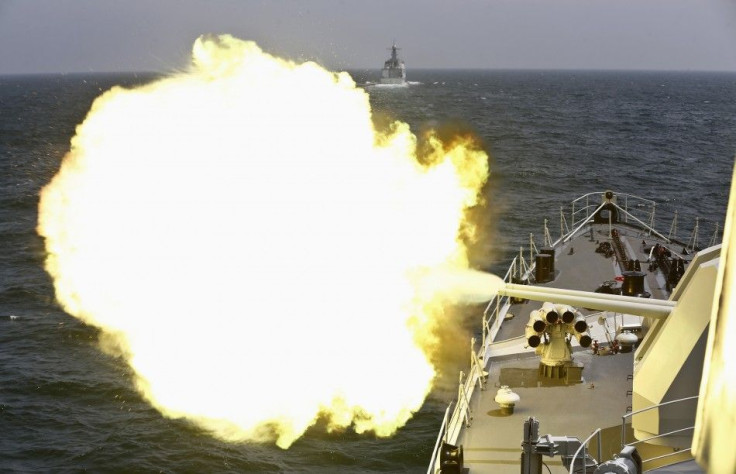China May Gain Control of South China Sea, Says US: Fast Tracked Air Strip On Fiery Cross Reef Confirms Chinese Plans

The United States seems to be partially confirming the fact that China’s island building program in the South China Sea is going unabated in such a pace it is going to take total control of some of the world’s most important waterways. This admission came from a top U.S.’s military commander overseeing Asia, while making his submission to the Senate panel on defense.
“If this activity continues at this pace it would give them de facto control of the maritime territory they claim," Admiral Samuel Locklear, head of the U.S. Pacific Command, told the U.S. Senate, reports Bloomberg. Locklear said China is on the way to install long-range detection radars, base warships and warplanes on the islands to attain the ability to enforce an air defense identification zone. Already satellite photos are out that shows images of Chinese dredgers at work at Mischief Reef in the Spratly Islands, which are also claimed by Vietnam, the Philippines and Taiwan.
Obama’s Concern
On April 10, President Barack Obama also expressed the concern of U.S. in China using its “muscle and power” to dominate smaller countries in the region. Describing the pace of China’s building program as “astonishing,” Locklear said the islands would bestow China the ability to locate a maritime security force in waters and that would be bigger than the combined coast guards of the Southeast Asian countries.
In South China sea, China has been steadfastly staking claims for about four-fifths of the waters, home to world’s busiest shipping lanes, on the basis of a so called "Nine-dash Line" drawn on a 1940s map. This effectively rejects the claims of Vietnam, the Philippines, Taiwan, Malaysia and Brunei on the territory in the waters.
China has also ignored all international concerns on the issue, saying that it has a right to carry out construction work on its sovereign territory in the South China Sea. According to Locklear it certainly complicated the security environment. Efforts made by the Association of Southeast Asian Nations to work with China on a code of conduct in the South China Sea have not produced any valid result.
Locklear said the increasing number and technical sophistication of the submarines in the Indo-Pacific is also posing new challenges to the U.S. navy in operating in the area. He said out of the 300 submarines in the world that are non U.S. vessels, 200 are in the Indo-Pacific making it the most militarised part of the world.
Air Strip In Progress
The Guardian also reports China’s “rapid progress” in building an airstrip for military use in contested territory in the South China Sea, citing satellite images. The report said the new facility being built on reclaimed land around a reef is big enough to accommodate fighter jets and surveillance aircraft. Jane’s Defence Weekly had released the images taken on 23 March, that showed the runway on Fiery Cross reef in the disputed Spratly archipelago stretching to 500m with the scope to grow to six times that length in future. Paved sections of apron were also visible in the images. Tensions around South China sea are bound to grow, due to the growing interest in the area’s energy reserves and anxieties about China’s rise and assertiveness. The sea also boasts of valuable fisheries wealth besides being a strategic shipping route.
Rounding up the current security scenario, the U.S military official noted in general terms, “A China with a military that would come forward as a net provider of security than a net user of security would be beneficial to not only the region, but also to us.”
(For feedback/comments, contact the writer at kalyanaussie@gmail.com)




















